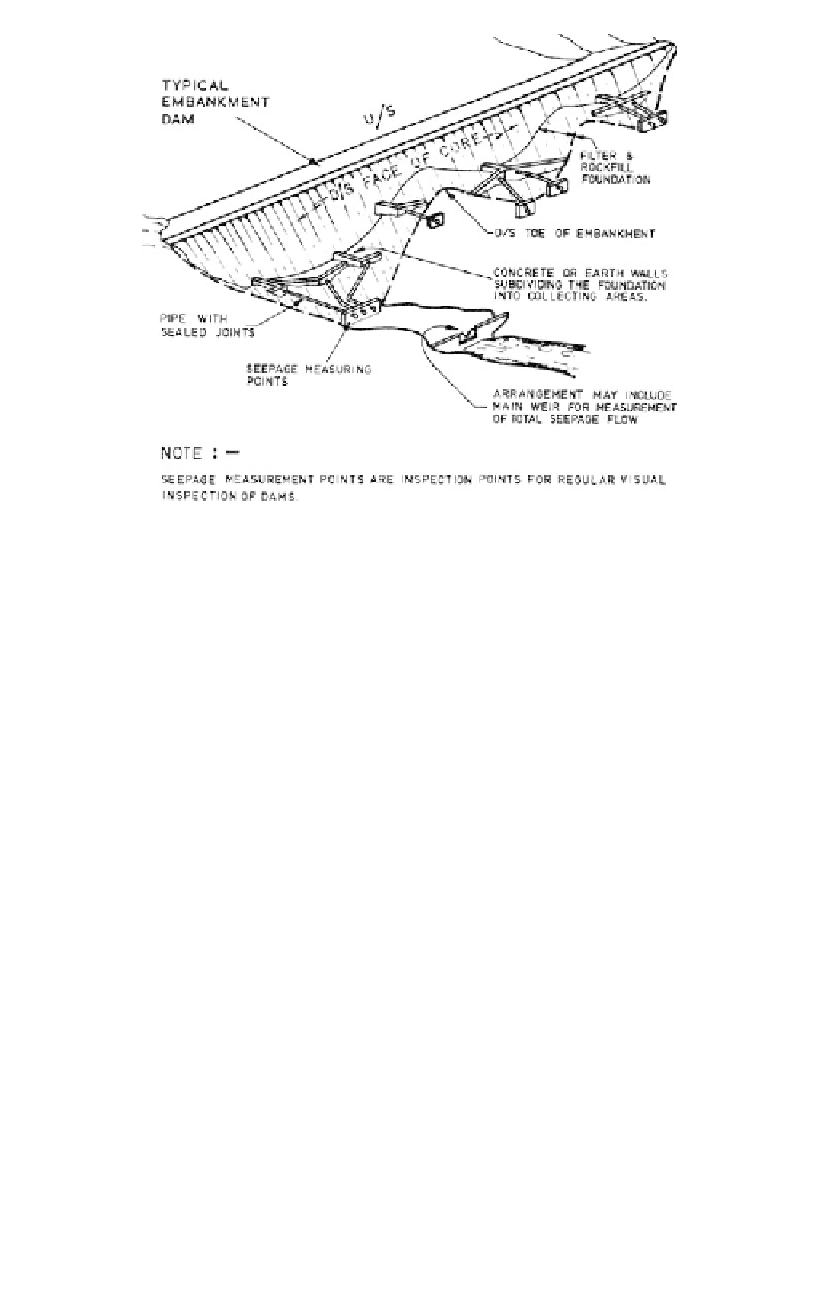Environmental Engineering Reference
In-Depth Information
Figure 20.9.
Seepage collection and measuring system for an earth and rockfill dam (ANCOLD, 1983).
-Timed discharge into measuring vessels;
-Visual inspection where flow rates are very small.
It is often impractical to collect and measure all seepage, particularly for dams on
alluvial foundations. In these cases, installation and monitoring of piezometers in the
foundations under and downstream of the dam can give information on changing condi-
tions, which might indicate a problem is developing. Problems also are experienced where
the toe of the dam is flooded by the tailwater from a hydropower station or irrigation out-
let. In these cases collecting and measuring seepage in the body of the dam, as shown in
Figure 20.9, is desirable but is seldom done in practice.
Chemical analysis of seepage can be a useful guide to the source of the seepage water, e.g.:
-A comparison of ions in the reservoir water and seepage may indicate leaching of cement
from grout curtains, or oxidation of sulphides within the foundation or within the
embankment materials;
- Biological analysis can indicate the source relative to depth in the reservoir;
- The age of water as determined by analysis of tritium can indicate its sources as rain-
water or groundwater.
More importantly, routine inspection of seepage discharge should be made noting any
discolouration of the water which may indicate piping of the embankment or the founda-
tion. Any inexplicable increase in suspended solids, particularly during first filling, needs
to be treated with some urgency as piping can develop rapidly.
Seepage measurements can be augmented by having some carefully placed groundwater
observation holes on the downstream abutment. These holes can pick up gradually chang-
ing groundwater in the abutments and possibly help explain the influence of groundwater
from hillsides above the dam.

